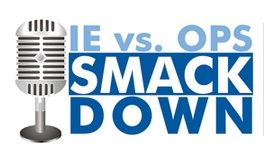The economic impact of Ebola: Monitoring the impact of potential transport disruptions on traders, food availability, and market prices
/The first results of our market-tracking survey in response to the Ebola crisis in Sierra Leone are in, and the full report can be found on the IGC website. On the whole the results are encouraging, although I should stress that this survey only looks at one particular (though immediate) concern: namely, the impact of the cordon and potential reductions in activity of traders on the distribution of basic food. We have other work underway which will attempt to quantify some of the other main concerns, such as the extent to which general economic activity is depressed by the uncertainty and fear surrounding the outbreak.
This work is being done jointly with Tavneet Suri and Herbert M’cleod. The IPA Sierra Leone office--and the amazing local research staff there--did a heroic job completing this survey in such a short time to their normal high standards.
The summary findings from the report are below. This morning I also did an interview on CNBC Africa discussing this study. You can watch it here.
Summary
August is the peak of the lean season, when imported rice is transported throughout the country to fulfill food needs. The government cordon in Kenema and Kailahun has the potential to interrupt this flow of food. While the government and its partners have been bringing food into the districts impacted by the cordon, it is critical to monitor whether this food is reaching rural markets. In addition, if informal traders reduce their activity for fear of infection, prices of food could rise even in areas with lower infection rates.
We therefore worked with Innovations for Poverty Action (IPA) to collect data on food availability, prices, and number of traders in 152 markets throughout Sierra Leone during the week of August 19–27, 2014. We were able to compare responses to those collected in August 2012. In addition, we compare the cordon districts (Kailahun and Kenema) to the noncordoned districts to look at whether the cordon is impacting food availability and prices.
We find that:
- The number of traders of imported rice is lower in 2014 than 2012, but stable in the cordon districts of Kailahun and Kenema compared to the other districts. This suggests that the fear of infection and the cordon itself have not disrupted trade greatly. The number of traders of domestic rice is much higher relative to 2012, but this is only the case in the noncordoned districts, not in Kailahun and Kenema. However, note that only 9 percent of markets reported local rice harvests having already started in the area. This lower relative level of local rice traders in cordoned districts will need to be watched carefully as local rice harvests start to pick up.
- The government’s efforts to keep food flowing into the cordon areas seem to be proving largely effective. Prices of imported rice are similar in Kenema to the rest of the country but slightly higher in markets in Kailahun. The majority of markets showing price spikes are in Kailahun. This suggests additional rice could be brought into Kailahun and that it is important to ensure good distribution throughout this remote district.
- Palm oil prices are similar in Kailahun and Kenema to other parts of the country. Normally palm oil is cheaper in these districts than elsewhere, so this represents a relative increase compared to 2012.
- The rice harvest is a month away and good rains this year mean it should be a good harvest. This may relieve the need to transport rice into the cordoned areas over time. However, we are in unknown territory so it will be important to continue to monitor the situation.
- The cocoa harvest has started in Kailhun and Kenema and it will be important to ensure that growers of cash crops can get their produce out of cordoned areas.
Figure 1: Location of markets for monitoring survey, 2014
Figure 2: Prices of imported rice (Leones/kg) in 2012 and 2014 in cordoned and noncordoned districts
Figure 3: Kernel density of price of imported rice (Leones/kg)









